We're all drowning in tinsel, candy canes, and menorah candle wax, so our thoughts turn naturally to children. The spoiled little buggers rule the season, so I thought it was all too appropriate to celebrate my favorite children's books. Here they are, in ascending order. If you have any particular favorites, leave a comment!
![]() 10. 'Make Way for Ducklings' by Robert McCloskey
10. 'Make Way for Ducklings' by Robert McCloskey
There are eight of them: Jack, Kack, Lack, Mack, Nack, Ouack, Pack and Quack. They’re the offspring of Mr. and Mrs. Mallard, who, in keeping with children’s myopic view the world, have no first names. The Mallards are not the brightest fowl in the pond: the dimwits mistake the famous swan boats in Boston’s Public Garden Lagoon for real birds. Moreover, Mr. Mallard is decidedly untrustworthy. Shortly after the birth of his kids, he takes a powder, splitting up the river on a weeklong joy-swim, leaving to his wife the terrors of child rearing. (He can’t fly ‘cause the couple just molted. What’s ‘molting,’ you ask? Look it up yourself, and ponder the Industrial Revolution and its effect on our once-agrarian culture.) Chief among these frights are careless bicyclists; one of them (possibly Alec Baldwin) nearly runs over Mrs. Mallard! To make a 68-page story shorter, the tykes end up getting a police escort to their new home in the park, and all is well with the world. The enduring popularity of this 1941 classic led Boston to celebrate the ducklings and their mother with a sculpture in the Public Garden. Mr. Mallard’s history of child abandonment must be the reason for his exclusion.
![]() 9. 'The Story of Babar', 'Babar’s Travels', and 'Babar the King' by Jean de Brunhoff
9. 'The Story of Babar', 'Babar’s Travels', and 'Babar the King' by Jean de Brunhoff
Fierce political criticism has rocked these seemingly innocent tales of an elephant with a taste for green suits. A quick rehash of the stories makes the reasons clear: Babar escapes the African jungle for the big city, where he is co-opted by an old woman who remakes him into an imitation European with clothes and a white man’s education. He returns to the elephant kingdom, and, after the old king croaks courtesy of a poisonous mushroom (curiously, there’s no investigation), he becomes king of the elephants and brings urbanization to the uncultured jungle. In short, he’s a cute, benign version of Idi Amin. Face it: the Babar series is basically an apology for neocolonialism. The helpful old lady is a condescending imperialist; Babar is an autocratic shill for capitalism. Under his dictatorship (there is no democracy under Babarian rule), he orders the bulldozing of the native ecosystem to build Celesteville, a new city of identical, soul-free bungalows named after the first cousin who becomes his wife; he installs her as queen in a successful effort to cement his family dynasty and ensure the Babar clan’s grip on power for generations to come. I loved these books as a five-year-old. I’m so ashamed.
![]() 8. 'Charlotte’s Web' by E.B. White
8. 'Charlotte’s Web' by E.B. White
(Spoiler alert! Stop now if you intend to take my recommendation and read this great, enduring tale of a pig, a rat, and a spider. You’ve been warned.)
My fourth grade teacher, Mrs. Bednar, read a small portion of Charlotte’s Web to us as our daily treat in the afternoon. We were enthralled. I know I wasn’t alone in my adoration of E.B. White’s emotionally complicated, beautifully written book. The class, normally fidgety and sometimes raucous, remained absolutely silent and still while she was telling us the story of a runty pig named Wilbur and the unlikely friendship he forms with Charlotte, a friendly and wise spider. Life on the farm is harsh and expendable; Wilbur seems destined for the slaughterhouse. But clever Charlotte begins weaving messages praising Wilbur into her webs, the locals see them as miracles from the hand of God, and the pig not only evades being butchered but also wins a prize at the county fair. This triumph, however, occurs right before one of the most shocking episodes I have ever encountered in all literature: Charlotte dies. Mrs. Bednar’s fourth grade class burst into tears en masse at this devastating turn of events. And despite Wilbur befriending Charlotte’s progeny and the book ending on an upbeat note, the death of kindly Charlotte remains one of the most disturbing events in any book I’ve ever read. They should have brought in grief counselors to help us deal with the trauma.
![]() 7. 'Madeline' by Ludwig Bemelmans
7. 'Madeline' by Ludwig Bemelmans
It’s difficult to know exactly why I, a little Jewish boy in western Pennsylvania, was so entranced by this tale of nuns and Catholic schoolgirls in Paris. The original book, first published in 1939, went on to spawn a media empire, with sequels and audiobooks and TV shows and movies, but I only remember the first – a simple story told in rhymes of a little girl’s sudden attack of appendicitis. Yes, you read that correctly: little Madeline has to be rushed to the hospital in the middle of the night for emergency surgery. One might find this story element to be upsetting to small children, but I, for one, couldn’t get enough of it. Maybe it sparked a short-lived dream of becoming a doctor.
![]() 6. 'The Five Chinese Brothers' by Claire Huchet Bishop
6. 'The Five Chinese Brothers' by Claire Huchet Bishop
It doesn’t help that they’re superheroes. Like Babar, The Five Chinese Brothers is most attackable on political and racial grounds. On the positive side, each brother is endowed with a special power: one can hold his breath forever; one can swallow the ocean; one stretches his legs beyond all reason; one can be in the midst of a fire and not get burned; and one has a neck made of iron. On the down side, they are identical – smiling, slant-eyed, and all colored an unfortunate shade of bright yellow. They all wear the same Coolie outfit. Talk about how all Asians look alike: even their fellow countrymen can’t tell them apart. Still, the book has one extraordinarily memorable illustration: the brother who swallows the sea makes it possible for a kid to stroll around on the ocean floor picking up as much seafood as possible. My uncle took me fishing once; I had a tough time with those icky worms. It would be so much easier to just take a walk and pick up fish the way you pluck boxes of Fruit Loops off the supermarket shelf.
![]() 5. 'Norman the Doorman' by Don Freeman
5. 'Norman the Doorman' by Don Freeman
As you might imagine, I was a pretentious, obnoxious child. I hated sports; I loved museums. Norman the Doorman was one of my most treasured books. Norman the mouse, see, is the doorman at the mouse hole side entrance to the Museum of Art. He’s quite knowledgeable about the museum’s basement collection, so he acts as tour guide for the well-dressed mice who visit the collection. One very cool thing about Norman’s life at the museum is that he gets to live in the visor of a suit of armor. Best of all, Norman is himself an artist. His medium: mousetraps. Genius! Norman turns the means of his own execution into art! He’s a subversive whose dark-themed works challenge conventional notions not only about rodents but also about justice and even mortality itself. His pieces, constructed out of found materials, interrogate the fraught space between pleasure (cheese) and extreme pain (the snapping metal bar that threatens to bash his little brains out). Norman the Doorman is an American master.
![]() 4. 'The Happy Hollisters' by Jerry West
4. 'The Happy Hollisters' by Jerry West
A man named Andrew E. Svenson, who for some reason took on the pseudonym Jerry West, wrote this mystery series — thirty-three books in all. I can honestly say that they were the first books to teach me the rudiments of story structure. Being mysteries, they’re very skillfully plotted, and when I read them — devoured them, really — I began to notice that the author liked to end chapters in a way that made me want to start the next chapter right away. About ten years ago, one of my editors informed me that when she receives a nonfiction manuscript from a writer, she checks the end of every chapter before reading the whole thing through; I silently thanked Jerry West for pointing out the importance of closing chapters carefully. In retrospect, The Happy Hollisters books are thoroughly white bread; the squeaky clean, all-American family now makes me cringe a little. Dad runs a general store; Mom cooks; and the kids are well drawn but saccharine. The boy, twelve-year-old Pete, does boy things like playing sports and being brave. When excited, he cries, “Crickets!” I identified instead with ten-year-old Pam — she is tender with animals. God, writing this paragraph is giving me a sugar headache. Still, the fact remains that when I saw the complete series at a flea market some years ago, I snapped it all up, and thirty-three volumes of The Happy Hollisters still have pride of place on the bookshelf in the room I write in.
![]() 3. ''On Beyond Zebra!' by Dr. Seuss
3. ''On Beyond Zebra!' by Dr. Seuss
Theodor Geisl, who wrote under the name Dr. Seuss, is best known for the megaclassic The Cat in the Hat and its sequel, The Cat in the Hat Comes Back. But while I certainly loved those two, my favorite was — and remains — On Beyond Zebra! First published in 1955, it’s a book made for language lovers: it chronicles the many letters of the alphabet that come after the letter Z and the animal names those letters form. For instance, Wum. And Um. Just as Z is for zebra, Wum is for wumbus. Um is for umbus. The best of all, of course, is Spazz. (Spazz is for spazzim, dummy!) The letters themselves are fantastically beautiful shapes in their own right. They resemble the written language of Middle Earth and the Runic Symbol Formerly Known as Prince. Like most of Geisl’s verse, On Beyond Zebra! is written in anapestic tetrameter. But you knew that already.
![]() 2. 'Little Benny Wanted a Pony' by Oliver O’Connor Barrett
2. 'Little Benny Wanted a Pony' by Oliver O’Connor Barrett
“This is the story of Little Benny, who wanted a pony but found a penny.” So starts the sentimental favorite in this collection. With delightful illustrations by the great children’s book artist Richard Scarry, Little Benny was far and away my favorite book as a three-year-old. The second page reveals why: “He wanted the pony, but not the penny, so he took the penny straight to town to buy himself an angry frown.” I was a cynic even then. The kid wants a pony, goddamn it, but all he gets is a lousy penny! I’d be pissed off, too. The book provoked some controversy between my parents, on account of the section in which Little Benny peers through the window of the town hall and sees “the corpulent mayor fast asleep in a red-plush chair.” My father was outraged: “How is the child supposed to know what corpulent means?” My mother’s calm response: “By looking at the pictures.” She was right. The mayor is quite rotund. In any case, Little Benny gets his pony in the end, his mother uses the penny to buy “cakes and cookies of every sort,” and on the final page Benny and the pony sit at the dining table happily gorging themselves. Little Benny is my favorite book of all time.
![]() 1. 'Slovenly Peter' ('Struwwelpeter') by Heinrich Hoffman
1. 'Slovenly Peter' ('Struwwelpeter') by Heinrich Hoffman
This notorious volume of shocking tales intended to terrify children into good behavior was first published in Germany in 1845. No less than Mark Twain translated the book into English. Its mix of moral logic and morbid humor was right up Twain’s alley. The title story is fairly mild: Peter doesn’t keep himself clean and consequently has no friends. It’s not until we get to the third story that things really get going: “The Dreadful Story of the Matches” tells of an ill-behaved little girl who doesn’t heed warnings about the consequences of playing with matches and burns to death. Yes, the child fries. That’ll teach her! There’s a tale about race, believe it or not: Saint Nicolas catches a group of mean boys teasing a dark-skinned lad, so he dips the errant youths in black ink. (Shades of The Watermelon Man.) “A plague o' both your houses” is the theme of a story in which a rabbit steals a hunter’s gun and menaces him with it, only to have the rabbit’s child scalded by hot coffee while the hunter falls into a well. In another, a little boy goes outside during a storm and is swept up by the wind and carried away. So long, kid! And finally my favorite: little Kaspar refuses to eat his soup. So he starves to death. The little jerk gets what he deserves, if you ask me.
What's your favorite children's book? (And don't say Goodnight, Moon!)

About the author
Ed Sikov is the author of 7 books about films and filmmakers, including On Sunset Boulevard:; The Life and Times of Billy Wilder; Mr. Strangelove: A Biography of Peter Sellers; and Dark Victory: The Life of Bette Davis.
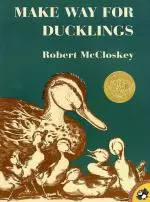 10. 'Make Way for Ducklings' by Robert McCloskey
10. 'Make Way for Ducklings' by Robert McCloskey
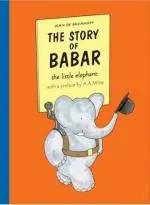 9. 'The Story of Babar', 'Babar’s Travels', and 'Babar the King' by Jean de Brunhoff
9. 'The Story of Babar', 'Babar’s Travels', and 'Babar the King' by Jean de Brunhoff
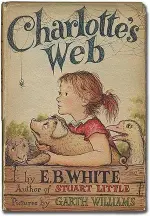 8. 'Charlotte’s Web' by E.B. White
8. 'Charlotte’s Web' by E.B. White
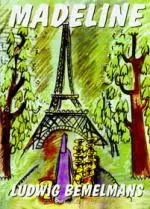 7. 'Madeline' by Ludwig Bemelmans
7. 'Madeline' by Ludwig Bemelmans
 6. 'The Five Chinese Brothers' by Claire Huchet Bishop
6. 'The Five Chinese Brothers' by Claire Huchet Bishop
 5. 'Norman the Doorman' by Don Freeman
5. 'Norman the Doorman' by Don Freeman
 4. 'The Happy Hollisters' by Jerry West
4. 'The Happy Hollisters' by Jerry West
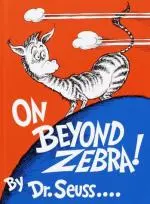 3. ''On Beyond Zebra!' by Dr. Seuss
3. ''On Beyond Zebra!' by Dr. Seuss
 2. 'Little Benny Wanted a Pony' by Oliver O’Connor Barrett
2. 'Little Benny Wanted a Pony' by Oliver O’Connor Barrett
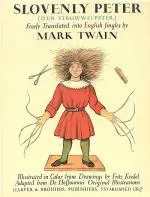 1. 'Slovenly Peter' ('Struwwelpeter') by Heinrich Hoffman
1. 'Slovenly Peter' ('Struwwelpeter') by Heinrich Hoffman








